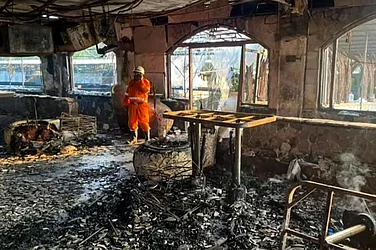The hallowed trio of Hoysala temples, nestled in the heart of Karnataka, has attained worldwide acclaim by securing a coveted spot on the prestigious UNESCO World Heritage List. Last year, the Union Culture Ministry officially nominated the Hoysala Temples of Belur, Halebid, and Somnathapura in Karnataka for the 2022-2023 World Heritage List, marking a significant milestone in preserving and recognizing India's rich historical and cultural heritage.
In a celebratory tweet, External Affairs Minister Dr. S. Jaishankar has shared his joy over the inclusion of the Sacred Ensembles of the Hoysalas onto the prestigious UNESCO World Heritage list. This recognition, he believes, is a well-deserved honor for our rich traditional art and architectural heritage.
Constructed in the 12th and 13th centuries, the sacred ensembles of the Hoysalas, represented by Belur, Halebid, and Somnathapura, bear witness to the remarkable creativity and expertise of Hoysala artists and architects who crafted these unparalleled masterpieces. The Ministry of Culture previously noted, "The Hoysala architects leveraged their profound knowledge of temple architecture from various parts of India to their advantage."
While the Hoysala temples exhibit a fundamental Dravidian morphology, they also showcase strong influences from the Bhumija mode of Central India, the Nagara traditions of northern and western India, and the Karntata Dravida modes favored by the Kalyani Chalukyas. This eclectic blend of architectural elements and innovative modifications resulted in the birth of the distinctive 'Hoysala Temple' form.
UNESCO, in its statement, described this serial property as encompassing the three most representative examples of Hoysala-style temple complexes in southern India, dating from the 12th to 13th centuries. "The Hoysala style emerged through a meticulous selection of contemporary and historical temple features, creating a unique identity distinct from neighboring kingdoms."
The global cultural organization highlighted the shrines' distinguishing features, such as hyper-real sculptures and stone carvings adorning the entire architectural surface, a circumambulatory platform, an expansive sculptural gallery, a multi-tiered frieze, and depictions of the Sala legend. UNESCO acknowledged that the excellence of sculptural art underscores the artistic accomplishments of these temple complexes


























